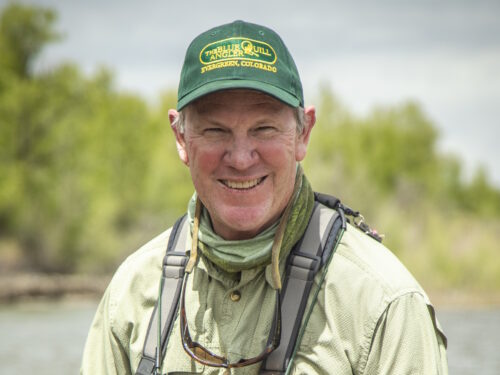
Famous guide Pat Dorsey just seems to know a lot about many things. Given that he guides at highly-pressured waters in Colorado, he represents a wealth of knowledge.
To that end, his interview on the Orvis podcast was full of gems. It’s an older podcast but IMO is worth a listen or relisten.
If you’re pressed for time, here is an AI summary:
- Fishing Emergers Effectively
- Recognize Emerger Activity: Watch for fish behavior such as dorsal or tail fins breaking the surface rather than full rises; this suggests fish are targeting emergers just below or in the surface film[1][2].
- Fly Selection: Use unweighted, sparse emerger patterns tied on light wire hooks. Pat’s favorites include the RS2, Mercury Baetis, and Top Secret Midge. He sometimes uses “secret” patterns that are close imitations of local hatches[2][1].
- Floating Position: Fish emergers so they hover in or just beneath the surface film. Sometimes, apply floatant to only the tippet and fly’s head to make the rear end hang below the surface, mimicking a struggling insect[2].
- Multiple Flies: Employ a two-fly or even three-fly rig, combining dry flies, emergers, and nymphs to cover various water columns and feeding zones[2][1].
- Presentation and Technique
- Dead Drift: Strive for a dead drift when fishing emergers or nymphs. Any unnatural movement can put off selective trout[2][1].
- Light Tippet: Use fine, clear tippet (6X or thinner) for stealth and better drift—especially on pressured or clear tailwaters[3].
- Leader Construction: Build leaders for a gentle presentation and optimal turnover of tiny or lightweight flies[3].
- Reach Mend Cast: Employ the reach mend to control drag and prolong the natural drift, especially on tricky currents[4].
- Tactics for Selective or Pressured Fish
- Small Patterns: Often use tiny flies—sizes 20 to 26. Dorsey’s “Black Beauty,” “Top Secret Midge,” and midge larva patterns are effective on picky, tailwater trout[4][3].
- Stealth and Positioning: Approach cautiously, keep a low profile, minimize wading, and cast from a distance to avoid spooking fish[5][3].
- Indicator Use: While Dorsey sometimes uses strike indicators, he prefers yarn because it lands softly and can be adjusted for micro-drag[4].
- Observing and Adapting
- Read the Water: Focus on slower seams, eddies, and foam lines, especially when emergers are likely predominant. Target spots where fish can feed with minimal energy expenditure[6].
- Adapt to Conditions: Be ready to change flies, tippet size, or even rig types based on fish reactions and water clarity. Watch for changing hatches and switch patterns accordingly[6][7].
- Conservation and Respect: Minimize fish handling, practice good catch-and-release, and reduce time spent photographing fish to limit stress on pressured waters[5].
- Gear and Fly Box Tips
- Essential Flies: Always carry small, secretive emergers, midges, and Baetis imitations. Dorsey’s box includes Black Beauty, Mercury Midge, Top Secret Midge, and customized local favorites[2][4].
- Key Gear: Use reliable, soft-landing indicators, a long-handled net, and quality tippet. Dorsey recommends the Fishpond waste pack for quick hand access[4].
- https://howtoflyfish.orvis.com/podcasts/general-fly-fishing/1782-15-tips-for-fishing-emergers-with-pat-dorsey
- https://news.orvis.com/fly-fishing/podcast-15-tips-for-fishing-emergers-with-pat-dorsey
- https://www.youtube.com/watch?v=mtN0srNxNT4
- https://podcasts.apple.com/us/podcast/pat-dorsey-interview-tailwater-fly-fishing-tips-and/id1330833158?i=1000426820291
- https://ffipodcast.com/blogs/articles/fly-fishing-tactics-and-observations-with-pat-dorsey-fly-fishing-insider-podcast
- https://podcasts.apple.com/us/podcast/pat-dorseys-tips-on-colorado-tailwaters-part-1/id1510963695?i=1000701115648&l=pt-BR
- https://www.destinationanglerpodcast.com/tailwater-tactics-with-pat-dorsey-part-2/
Discover more from BlogFlyFish.com
Subscribe to get the latest posts sent to your email.

All good advice especially on our tailwaters like the Farmington with it’s heavy angling pressure. I’m currently liking a Griffith’s Gnat and small RS2 or WD40. I need something to find where the darn emergers are hence the Gnat which does take a number of fish too! Sometimes I substitute an Ant for the Gnat.
So, you fish two dries? That was standard amongst many anglers in Montana, but I had always thought two dries created drag?
A dry and an emerger. Not much drag.